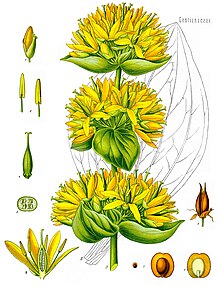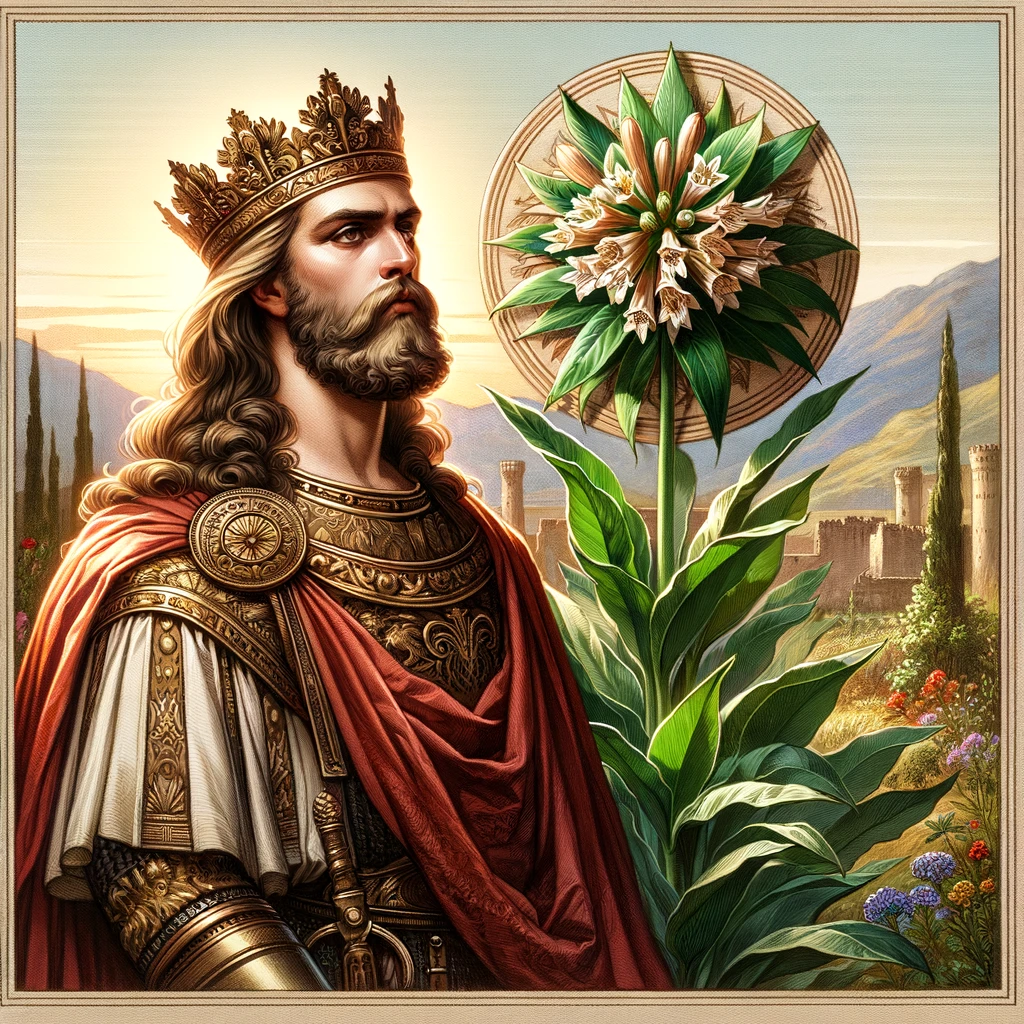Paris, le 24 novembre, 2023*
” The name of the genus: ‘Gentiana Lutea’ is given after the name of the Illyrian king Gentius.”
The juice and root of the plant are used in conditions like sclerosis, and anemia. The juice and root of the plant are used in conditions like sclerosis, and anemia.
Co-authors J. Drançolli and Musa A. Haxhiu
‘Medicine is not a product that human genius creates immediately, instantly, but it is a child of a long time,’ Giorgio Baglivi (1669-1707): ‘Opera omnis Medica’!
From the large number of medicinal plants that grew in Illyria and were exported throughout the Roman Empire, we should also mention Gentiana Lutea. The name of the genus is given after the name of the Illyrian king Gentius (2nd century BC), who widely used this plant for healing. Gentiana is an amarotonic, stimulating secretion in the lungs and the central nervous system. In the form of various preparations, it is mainly used as an amarotonic, and as such, is a component of many aperitifs and juices that help digestion and improve mood. Combined with iron and other constituents, it is used in conditions like sclerosis, anemia, etc. Gentiana roots are included in the composition of a large number of medicines, which are prepared in pharmacies and have entered the pharmaceutical industry on all continents. This shows the great importance of this plant in medicine, pharmacy, and the economy. The pharmaco medicinal importance of Gentiana is best seen from the fact that it is found in many pharmacopoeias of the world. Gentiana is valued not only in scientific medicine but also in folk medicine. It is interesting that few peoples throughout history have appreciated and used it correctly, like the peoples who live in the land where the Illyrians once lived.
Gentiana roots are included in the composition of a large number of medicines, which are prepared in pharmacies and have entered the pharmaceutical industry on all continents. This shows the great importance of this plant in medicine, pharmacy, and the economy. The pharmaco medicinal importance of Gentiana is best seen from the fact that it is found in many pharmacopoeias of the world. Gentiana is valued not only in scientific medicine but also in folk medicine. It is interesting that few peoples throughout history have appreciated and used it correctly, like the peoples who live in the land where the Illyrians once lived.
When you consider the fact that over the centuries there was a lot of malaria in the Balkans, and that before the introduction of quinine bark in Europe, Gentiana was the only herb used in its medicine, as well as the fact that, in the distant past, there were not many educated doctors, it can be said that Gentiana, as a medicinal plant, has played an important role over the centuries in the treatment of various diseases. The very early data on the healing properties of Gentian, according to ancient sources, can be found in G. Plinius Secundus (Naturalis Historiae, XV.7.34), who provides the following information: ‘Gentian, the king of the Illyrians, discovered Gentiana. Gentiana grows everywhere, but the one from Illyria is most prized, with strawberry-like leaves, the size of lettuce leaves. The stem is moist and thick as a thumb, and inside, it is rich in branches and leaves that change throughout the year; the root is bent, almost black in color, and odorless. It is abundant on the edges of subalpine mountains, in humid places. The juice and root of the plant are used. The root has warming properties, but pregnant women should not use it.’ During the Middle Ages, it was popularized according to the compilation of Dioscurides, Ricettario Fiorentino, and Circa instans.

Gentiana lutea is depicted on the reverse of the Albanian 2000 lekë banknote, issued in 2008. The note depicts King Gentius on its obverse.
**Gentiana lutea is depicted on the reverse of the Albanian 2000 lekë banknote, issued in 2008. The note depicts King Gentius on its obverse.
#ancient medicine #Gentiana Lutea; #Illyrian king Gentius, #Albanian heritage #Institut Français d’Études Albanaises #Professor Jahja Drançolli #Academician Musa A. Haxhiu



 Here are the artistic representations of King Gentius of Illyria with the Gentiana plant.
Here are the artistic representations of King Gentius of Illyria with the Gentiana plant. 